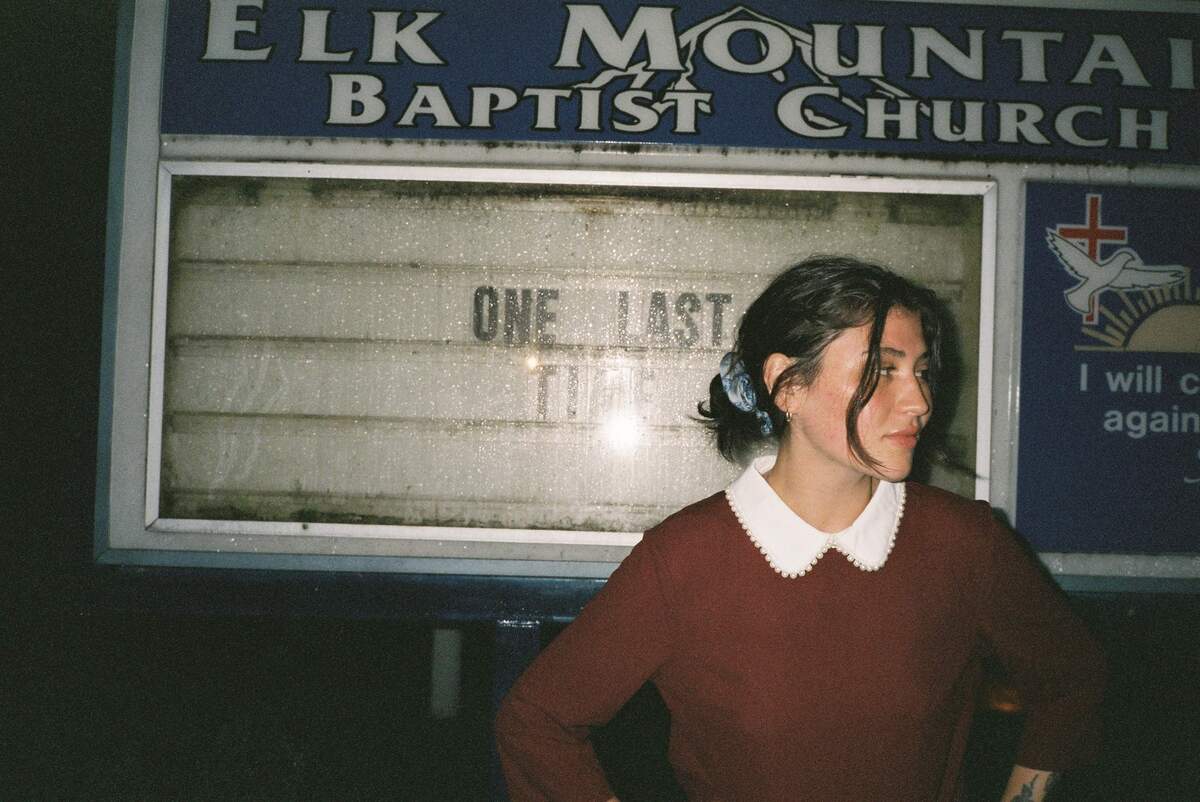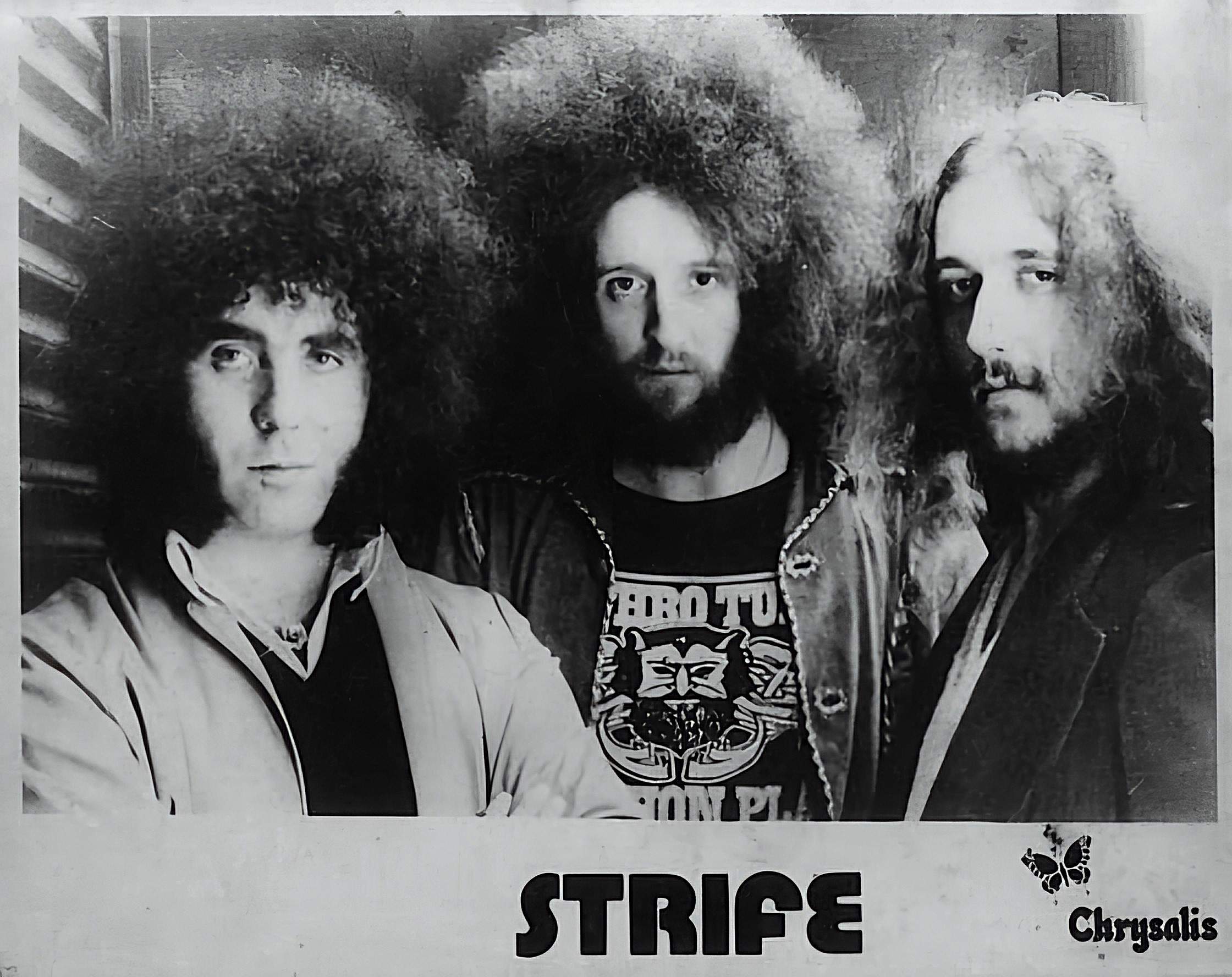Repeated Viewing – The Three Sisters Original Motion Picture Soundtrack (2015) review
Repeated Viewing – The Three Sisters Original Motion Picture Soundtrack – CD, 12” – Wil-Ru / We/Me Records
Alan Sinclair has been around for several years at this point making his own patented version of the dark wave ambient sound that so many people have been biting over the last few years. Sinclair on the other hand is no simple Carpenter worshipper, his love of the giallo, ambient, rock and horror genres all seamlessly blend together in Repeated Viewing. He’s released a ton of stuff over the years digitally, but only recently during the horror boom that’s happening, has he finally started to receive a little bit of the much deserved attention that he has coming his way and started to get physical product out into the world. He’s got a ton of releases in the works and I think one of the things that helped him finally garner attention from labels was this first release of some of his soundtrack work,in this case composed for the 2015 Daire McNab film The Three Sisters. I’ve got to be honest and say that I’m not super familiar with either the film, or McNab’s work. What I am familiar with is Repeated Viewing’s abilities when it comes to amazing composition and arrangement, honing his abilities over countless releases and years locked in experimental seclusion. Even considering all of this, The Three Sisters OST is an absolutely monumental step forward for Repeated Viewing as a coherent and cohesive collection of tracks; especially highlighted by the track sequence, which was obviously done to fit the moving images it was written to accompany. The Three Sisters perfectly showcases not only the hauntingly beautiful melodies that Repeated Viewing is known for while allowing him to channel his innermost giallo/horror vibes, but also the incredible breadth of sounds and emotions in between that he’s likewise more than capable of. Opening with the six and a half minute “Main Titles” (Three Sisters) synthesized bells ring and echo out of a forbidding darkness before being joined by a bellowing low end and guitars. Drums slowly slip themselves into the mix, dragging things into a lumbering convulsing procession before the song literally just explodes into a universe of sound. The guitars screech and pop, rising and then dipping back in the mix, a sinister slinking synthesizer looms and threatens below the entire composition; the sound slowly taking on a more and more hideous and threatening form. The main theme of the song begins to grow and then waver in the guitars and keys, threatening at times to almost disappear before the choir of sounds seem to convalesce into a perfectly conceived apex of sound, joining together in a unison call to dark gods and the ancient ones. The end of the song almost reminds me of something from one of the Phantasm movies, a perfectly executed arpeggio repeating behind a droning choir of ethereal voices, tied together by an extremely minimalist Carpenter rhythm. “Heartbeat” is the first song that should make it quite apparent you’re not just listening to any old horror soundtrack, that Three Sisters is something different and unique. The haunting piano line that opens and repeats throughout “Heartbeat” is damned near perfect, and the almost Friday The 13th use of the vocoder – or what I assume is a vocoder at least – is genius. The piercing calls of distorted breath are extremely unnerving, especially as they’re floating above a rising chorus of keys crawling up to the top of the mix, and finally fading away into nothingness. “Alone At Midnight” is a great example of how much influence Sinclair pulls from Italian giallo and avant-garde horror soundtracks. What starts as a seemingly random clamoring of sounds and blips, is slowly joined by a reticent drum track and a drone of bone shaking bottom-end. It really sounds like it could have been pulled out of some Dario Argento library music, the obviously analog sounds battling for space in the chocked and dense jungle of noise. Growing more emphatic the farther it progresses, “Alone At Midnight” slowly begins to take its’ enigmatic shape. The shift at three minutes in, and the proceeding forty seconds though, is something that could have been pulled out of a number of killer Cannon or Hammer horror films. A screeching organ drifts off slowly in the mix as “Alone At Midnight” comes to a close leading the listener to the humming opening notes of “She Hears Him”. Growing from the low bellowing tones of what sounds like a distorted organ or something, “She Hears Him” slowly begins to unhinge, little by little at first, tiptoeing along at a menacing pace. You almost feel like you’re peering through the eyes of a voyeur, slowly stalking their victim the sublime sounds in their mind growing darker and more intense with the passing of the seconds before fading slowly and giving way to the sound that follow it. If “She Hears Him” reminded me of a stalking track then “Gunter’s Sympathy” takes things to a whole new level. Growing from another echoed repeating sound very reminiscent of Manfredini’suse of vocal sampling on a plethora of Friday The 13th releases, the keys begin to slowly invade the soundscape, and their rhythmic pulsating finally almost overtakes the echoed cry desperately repeating in the background. An ominous choir of voices extremely reminiscent of Carpenter’s work on Prince Of Darkness or Seagrave and Myrow’s work on Phantasm joins the demonic symphony and then suddenly sputters out into nothingness, spiraling back into the mysterious ether from whence it came. “He’s Here” is intense and driving from the very get go; pulsing arpeggiation cycle in the background of a truly demonic sounding howl of low-end keys that rise like smoke and steam from a crack in the earth into the very depths of hell. It’s clear that things have just been warming up as the song begins to move in a much more threating direction, the sounds becoming increasingly despondent and atonal before again metamorphosing back into the repeated sounds of the synthesizers that close out the track. The haunting bells of “Resistance”hiss and breathe with cracks like a dirty tape crawling atop the seemingly placid surface and are joined by a rising wail of distortion and brain rattling guitars bubbling up from the depths of the mix. Suddenly, the track erupts into an explosion of live drums, guitar and dissonant keyboards franticly jangling and screaming in the recesses. “Resistance” could be just as at home in any of Elite Entertainment’s late 80’s action films as it would in an mid-80’s slasher flick, or The Three Sisters itself, at least I assume the latter. The full rocking sound of “Resistance” quickly dissipates and gives way to the ephemeral smoking tendrils of sound of “Childhood Fantasy”. Again proving that he’s just as at home with the more avant-garde side of composition and arrangement as he is with precise, infectiously repetitive themes and suites, Sinclair introduces a horrific sounding carnival organ into the muddied concoction of harsh despotic sounds. A single piercing note undulates and warbles, the other instrumentation and themes coming and going like ghosts in a haunted house the whole time. While it may not be the most ‘fun’ song on the album, it’s most certainly one of the most unnerving, and I dare you to stick on “Childhood Fantasy” late at night all alone and switch out all the lights – because I guarantee it will creep the hell out of you. “The Escape” is another long movement, around seven and a half minutes. These elongated compositions seem to be, or at least in my opinion, where Repeated Viewing really shines the brightest. His ability to grow a song from slow starting seeds and ideas that blossom into fully realized and multi-instrumental arrangements across an expanded time pallet and scene are what really set Sinclair’s work apart for me. He obviously takes his craft more seriously than a lot of the other people who set out to write much more upfront and hokey or intentionally retro synthesizer music. And there’s nothing wrong with that kind of music, I personally love a nice cheesy synth, but that’s not necessarily a good game plan and it doesn’t always work. When that’s the case the list of people to call upon who still work inside the industry and accompanying genre is extremely small, but Repeated Viewing should be near the top. His ability to weave altering emotions, build and drop suspense at will is unbelievable, and it’s easy to see, especially when listening to tracks like “The Escape”. Rising and building for nearly four minutes before it’s joined by any percussion, I’m not sure how the rhythm becomes so increasingly emphatic over that period without their being an abrupt or jolting shift. I’m not even really sure how Sinclair peels the layers back once more revealing the innermost core of the song, and then almost instantaneously introduces a host of live instruments without it sounding like a completely different song, but how he manages to shift the mood to a completely triumphant and celebratory one from the dirges of the most ominous of threats is absolutely spellbinding! There are those who will likely be turned off by some of the more rock influenced angles, upset it’s not completely synthesized sounds and solely electronica but they will be the minority and have obviously missed the point. Repeated Viewing does much more than imitate John Carpenter or rehashing ideas already done to death, but instead incorporates many more of the actual sounds that you would find in just about any horror or action soundtrack from the mid-80’s. For me, it’s just another thing that makes Repeated Viewing’s music truly unique and an absolute pleasure to listen to. “The Creator” is a quick reminder that you are indeed listening to a horror film soundtrack. The dissonant discordant synth tones and disembodied percussion that start “The Creator” quickly grow into a full-fledged monster. At a minute and a half “The Creator” begins to absolutely bleed giallo influences all over the place. You can hear some amazing Lucio Fulci and Stelvio Cippriani proclivities melded with what I would definitely call a Chuck Cirino influenced style and tone. “The Creator” sounds like it might work in Chopping Mall if you found the right scene. Like a song drug straight out of the 80s, although it’s a bit more dark and forbidding than Cirino’s compositions for Chopping Mall, “The Creator”defies time so deftly it could inevitably easily find a good home there. The CD release of The Three Sisters motion picture soundtrack is finished out by a series of four remixes by various and pretty well-known faces in the ‘ horror soundtrack’ and accompanying genre/community. The first is a remix of the opening “Main Titles” by Umberto, who is a ridiculously talented musician in his own right without a doubt, standing heads and tails above most of the rest of the recently arrived competition inside the horror music scene. He does not disappoint here, stripping away nearly two minutes of the original six and a half minute arrangement. In doing so, Umberto strikes at the very core of the original composition and crafts something new and amazing from it, something unholy and dark, forbidding and sinister. If you’ve ever stared pensively over the side of your bed wondering what horrors lie only inches from your face as you sleep beneath the slim covering of your sheets dangling like curtains to hide the hell beneath, than “Three Sisters” (Umberto Remix) should sound very familiar. It’s as if my childhood nightmares were perfectly encapsulated in escalating outbursts of synthesizers, taking shape and eventually a physical form before your very eyes as the song progresses. Reaching a frenzied peak of noise and commotion “Three Sisters” (Umberto Remix) finally breaks and rolls back in a wave of echoes and keys, only to be quickly replaced by the haunting tones of the “Gunter’s Sympathy” remix provided by none other than Vercetti Technicolor. I’m not even going to get into a huge sidebar about how amazing Vercetti is or how it’s the solo project of the Giallo Disco label owner, how you can get his albums digitally for free from his Bandcamp page or anything like that. What I will get into, is how Vercetti is able to cast a dreamy shadow of dark foreboding over the original version, making it even more ethereal and ghostly. The ephemeral form of “Gunter’s Sympathy” (Vercetti Technicolor Remix) pays much less homage to the Phantasm influences you could originally hear, and instead replaces them with a healthy helping of Carptenter-esque avant-garde sounds, tones, and drone notes wafting listlessly in and out of the mix. Nearly doubling the length of the original track, this is one of the rare occasions – where even though I love the original track, I think the remix might actually be a marked improvement; expanding the core idea of the song and allowing it more ample time to breathe. “He’s Here” the Antonio Maiovvi’s None More Cosmic Mix on the other hand is the weak link in the chain here for me. This is surprising as Maiovvi’s music is usually right up my alley, but in his more club-beat version of “He’s Here” I can’t help but feel like he stripped the heart right out of the track. Maybe it’s the fact that I love the original so much, but I don’t think that the None More Cosmic Mix quite lives up to its name or does proper justice to the original. The one thing I can say is that Maiovvi truly makes it his own, and it sounds much less like a remix than a completely new composition based on elements of the original tune.“Resistance” is given a new treatment by Night Sequels who I think much more aptly approach the tune and transform it into somewhat of a more club friendly sounding version of its predecessor. Half way through the song I wasn’t quite sure what to make of it, and then, exploding in a synthesized glitter of disco lights and glass floors I was rocketed onto the dance floor. The remix feels funky, not forced, dancible and yet not tampered with. I definitely prefer the original version of “Resistance”, but the new direction for the song that Night Sequels pulled off is pretty impressive in its’ own right. All in all Three Sisters is without a doubt one of the most interesting soundtracks I’ve ever heard offered up and the remixes filling up the extra space on the CD was a really nice touch as well in my humble opinion, making this more than worth the admission price. I love to see excess space filled up with something interesting or entertaining, and the four tracks at the end of the CD definitely qualify as all of that and more. I recently finished up a small Q+A with Alan Sinclair AKA Repeated Viewing and I was informed that the Three Sisters soundtrack is going to be released on 12” vinyl by We/Me Records unfortunately excluding the four remixes. However, vinyl enthusiasts fret not! The ever amazing Sinclair has your back in the form of the Three Sisters Remixes 12” that is going to be coming out on Disko Obscura in December. There’s a host of other Repeated Viewing releases in the works but I’ll talk more about all of that in my interview with him. In the meantime The Three Sisters will operate as a perfect primer course of what to expect from Repeated Viewing and wet your pallet to get in on some insider info… So what are you waiting for? This had to have taken you the better part of a year to read! Get off your guff, listen to some tunes, and make sure to score a copy soon. There’re only 300 copies of the CD and I’m pretty sure the vinyl’s going to be even more limited–read as: do not sleep on this release, it will sell out. Make sure to keep an eye out for the interview coming soon and further reviews too, as I’m going to be on Repeated Viewing like white on rice from now on!
– Listen to some music here: https://repeatedviewing.bandcamp.com/album/the-three-sisters
– Buy some music here: http://wil-ru.com/shop/repeated-viewing-the-three-sisters-ost-cd/
Review made by Roman Rathert/2015
© Copyright http://psychedelicbaby.blogspot.com/2015
Array




